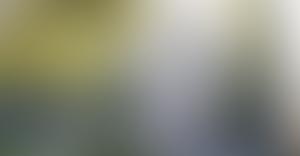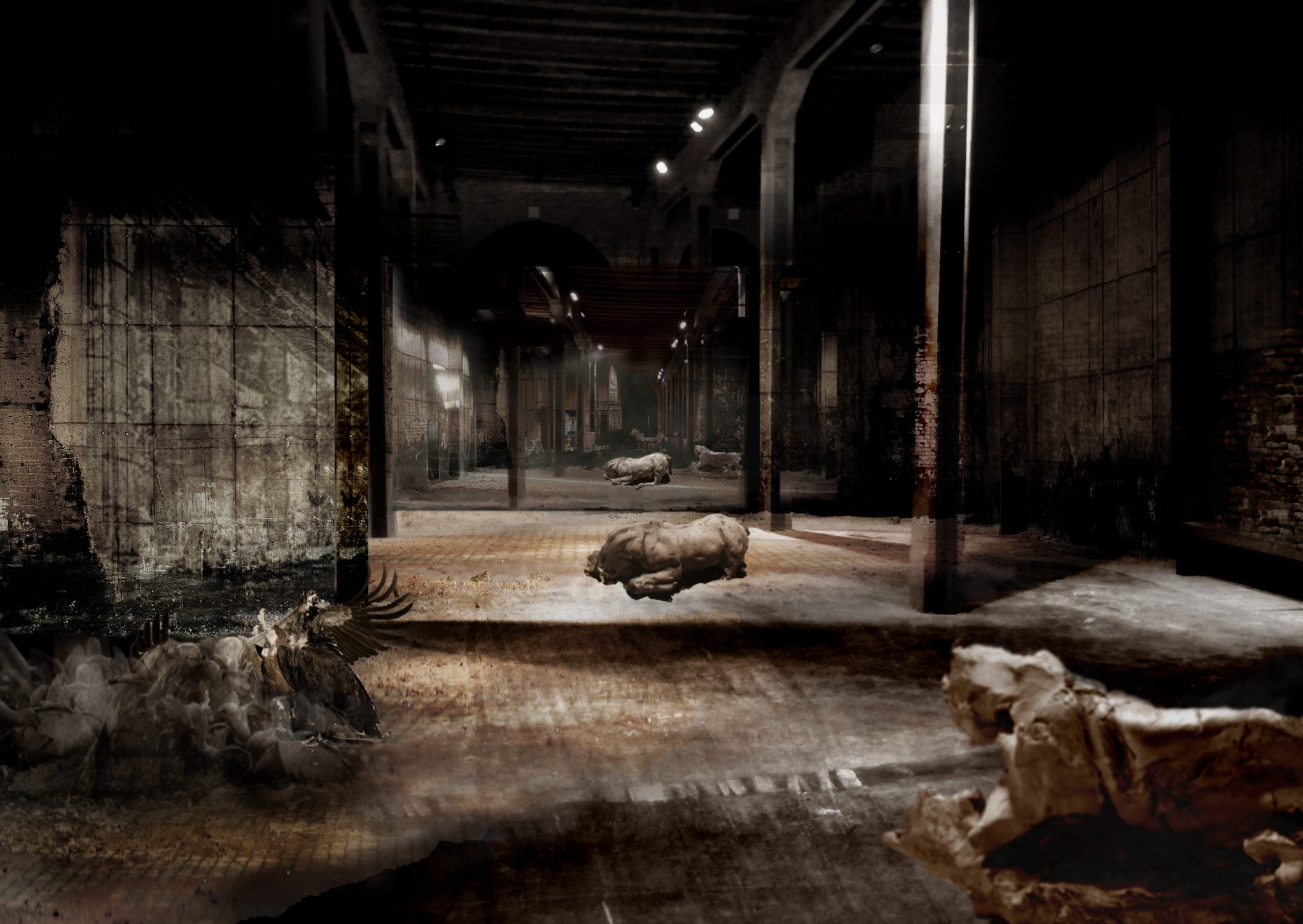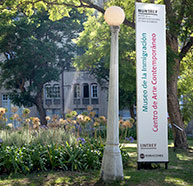-
Invisible gods, a narrative


-
Invisible gods, a narrative


-
From April 1st to June 26th
Artist: Hugo Aveta
Curator: Diana Wechsler
As though the artist’s dreams embodied those of humanity at a specific moment in history, these dreams dreamt during a period in which we experience a break with the way we live are the starting point of this project. The works in this exhibition are marked by a phantasmagorical vision that surrounds the world in a storm that we perceive to be eternal.
Ludic and literary elements are added to the oneiric. Everything is permeated by fantasy. When the human is detached from reality, from a linear time, fissures and worlds pierced with holes begin to be perceived and embraced. A deeper and timeless dis-order appears: the place of those invisible gods, although we don’t know which gods they are. We could say that they appear, that they come from elsewhere, that they exist among pierced worlds, that they arise and fade away, which broadens the dimensions of those worlds. They wander among these intermediate zones where the limits are blurred. They enter and exit drawings, photography, sculpture, and video. They are inhabited by allegories and uncertainties, fluctuating between the near and the distant of other times and other worlds that may have existed or will exist. Visitors find themselves at the threshold of an experience that is both spatial and internal, an experience hovering between memory and the tangible, between reality and dreams.
Adriana Carrizo
Creative interlocutor
-
CURATORIAL TEXT
Silence. Footsteps. The howling wind and the dust scraping on surfaces, the sharp bang of a window and always the wind. Suddenly, a mermaid and the dull sound of an engine in the distance. How to see in the dark? How to identify who inhabits time? How to narrate in a state of uncertainty?
Hugo Aveta sets a story in space through the artifice he creates with images and sounds. The story uses images to disturb and reopen the reflection on all levels.
Space and time are the vectors on which experience is organised. However, delimiting time becomes increasingly urgent and elusive at the same time. Is it possible to conceive of its tangibility? The first devices intended to control or regulate time sought to materialise its transience. First water and then sand were used to design a type of clock that effectively fulfilled the task of associating the flow of time with the physical passage of a fluid or solid that works by the mere effect of gravity. With the image of the hourglass as a starting point, Aveta revisits the contemporary experience of multiple, porous, complex time. He confronts us with time and invites us to explore another perception, which is no longer linear and neat like the hourglass, but plural, turbulent, simultaneous, reversible. In this video he figuratively attempts a dialogue with the new model of temporality introduced by Georges Didi-Huberman through the concept of anachronisms.
Assuming we agree on the anachronistic condition of the images, we can move into the complex and dislocated space that Aveta creates through his videos, sculptures, chronometer of ashes and drawings to be carried away by the porosity of time of this immersive work, a fiction through which diverse presences of past or future times flow, where invisible gods emerge.
Diana B. Wechsler
Curator -
THE RECTOR'S TEXT
This year marks the twentieth anniversary of MUNTREF. Since April 2002, the UNTREF campus in Caseros has been the home of the first art museum with its own collection in Greater Buenos Aires. Our halls have hosted a wide array of diverse and rich exhibitions in terms of their impact on the community as well as on the research activities involved in them.
They range from the anthologies of Antonio Berni to Pablo Picasso and Joaquín Torres García, from Gertrudis Chale to Marcia Schvartz, from the Grupo Espartaco to the Ojo del Río; from the conceptual explorations of David Lamelas to those of Alejandro Puente; from Quinquela Martín to Luis Seoane, Yuyo Noé, Alberto Heredia and Carlos Gorriarena, among many others. The electronic arts, which represent a distinctive academic development at UNTREF, had an early and privileged space in its halls with the curatorship and outstanding participation of Graciela Taquini – primus inter pares. They have also afforded a place to artists and curators whose formation takes place at our university.
In 2010, MUNTREF began to expand with the opening of its Art and Science Centre, a laboratory museum located in Tecnópolis. In 2012, with the Boltanski Buenos Aires multisite project, we set foot on the premises of the former Immigrants’ Hotel, where we have since developed the Museum of Immigration and the Contemporary Art Centre for cultural diversity. In 2017 we created the Centre for Art and Nature, a space for the promotion of environmental awareness.
Numerous exhibitions have been successively held. Artists and curators from Argentina and abroad have shown their work in this space, such as artists Graciela Sacco, Carlota Beltrame, Maria Lai, Anna Bella Geiger, Leila Alaoui, Natacha Nisic, Marina De Caro, Vik Muniz, Leandro Erlich, Bernardí Roig, Ali Kazma; and research curators Georges Didi-Huberman, Estrella de Diego and Marta Gili, to mention just a few.
The Electronic Arts Prize, the Braque Prize, BITAMINE, the BIM (Biennial of the Moving Image) and BIENALSUR are also part of our programme, which is supported by the Embassies of France, Spain and Italy, among the most usual ones, as well as by funds such as Mecenazgo, Italian Council, Pro Helvetia and others.
This list reflects the intense work we carry out to position MUNTREF as a catalyst for curatorial, research and social projects at the same time.
We began 2022 with a strong programme focused on ecofeminism in the exhibition by Sarina Scheidegger and Jimena Croceri curated by Lucrecia Palacios; migration and border issues in the collective project curated by Alex Brahim, Benedetta Casini and Diana Wechsler; the BITAMINE residency carried out with the Basque Country, and the enquiry into the role of time and the imaginary in Hugo Aveta’s immersive installation. This is the starting point at the Immigrants’ Hotel of the work to be developed throughout this anniversary year. For twenty years we have been committed to making these art spaces accessible to the community.
Finally, I wish to express my gratitude to our university’s collaborators, professors, and students, who in different ways participate in the development of this project, and to Diana Wechsler, our artistic director, who since 2009 has contributed her vital creativity to MUNTREF.
Aníbal Y. Jozami
UNTREF Rector
MUNTREF General Director -
LIST OF WORKS
Hugo Aveta
In the Face of Time, 2009. Video. 6’ 42’’
Across the Swamp, 2021. Video loop. 2’ 32’’
Flock, 2021. Video. 1’ 54’’
Chronos, 2022. Electronic steel and ash installation. 1.80 ø x 30 cm high
Rift, 2022. Sculpture. 197 x 130 x 57 cm
The Crossing of the Ape, 2021. Drawing on canvas. 350 x 550 cm
Nietzsche’s Shadow, 2021. Video. 4’ 55’’
Nietzsche’s Shadow. 2022. Sculpture. 80 x 70 x 240 cm
High Tide, 2021. Video. 2’
Narcissus, 2022. Sculpture. 150 x 100 x 300 cmBlack Concerns, 2022. Video installation, projection on flour. 1.80 ø x 50 cm high, loop video
Birds, 2022. Sculptural pieces in situ. Variable sizes
Rhinoceroses, 2021. Video. 1’ 18’’
Venue
Center of Contemporary Art







